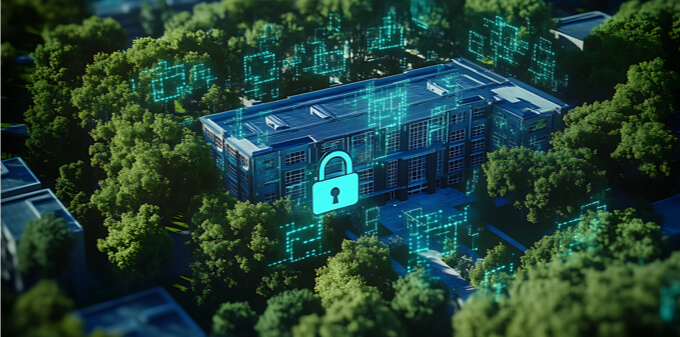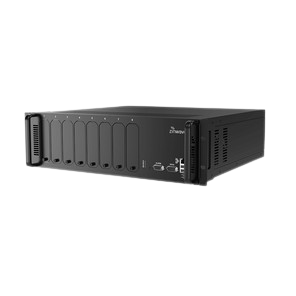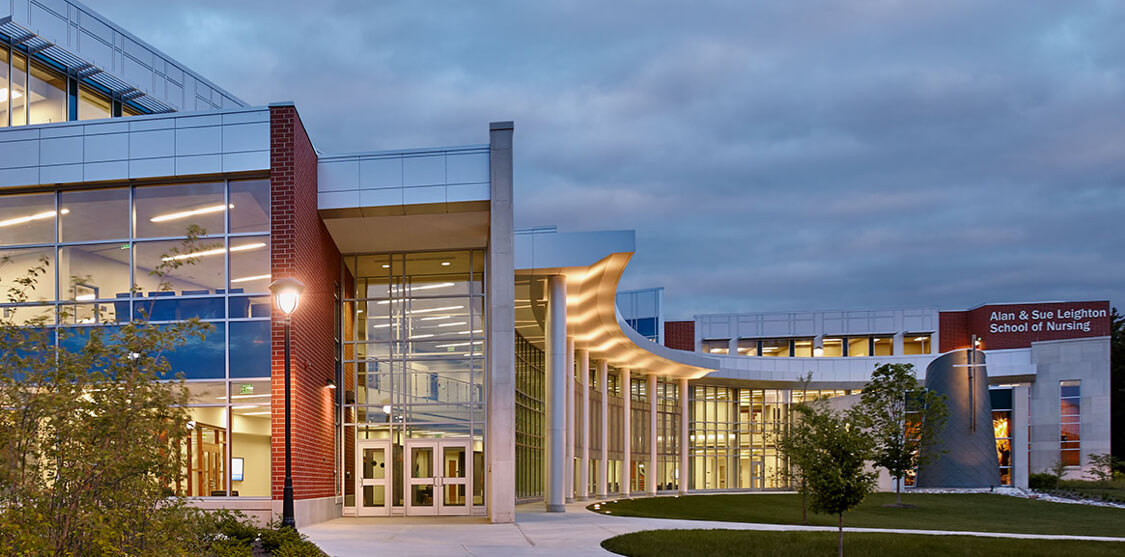Why Better Cell Service in Schools Matters for Learning & Safety
Why Schools Should Improve Cellular Connectivity
Many schools, from K–12 campuses to universities, still struggle with poor cellular coverage. In the past, that wasn’t a dealbreaker. Wi-Fi carried most of the digital load, and limited cell signal was seen as a way to minimise distractions.
But today, mobile connectivity plays a much bigger role in education and school operations. From classroom apps to emergency alerts, cell service supports the systems that keep schools running smoothly and safely. While WiFi remains essential, it’s not infallible. Strong cellular signal offers a dependable backup, and cell phone signal boosters can help extend that coverage across entire campuses.
We fix poor cell phone signal! Find the right signal booster for you:




What’s Blocking Cell Signal in Schools?
Most schools weren't built with cellular connectivity in mind. Several common factors contribute to weak or inconsistent reception:
- Building materials like concrete, steel, and low-emissivity glass can block or weaken incoming cellular signals.
- Layout and design features such as stairwells, interior classrooms, safe zones, and multiple floors can create dead zones.
- Surrounding terrain such as hills, dense trees, or nearby buildings may interfere with signal strength.
- Distance from cell towers can reduce signal quality, especially in rural or remote areas.
These issues often stack—leaving even modern campuses with dead zones and unreliable coverage.
How Strong Signal Supports Learning and Safety
From daily classroom activities to critical emergencies, strong cellular coverage helps schools stay connected, responsive, and ready to support every student and staff member.
1. Enhances Safety

In emergencies—whether storms, natural disasters, lockdowns, or other crises—dependable cell service is critical. It ensures staff can contact parents, first responders, and each other from anywhere on campus. Cellular-based alert systems rely on strong signal to send texts and emails immediately. Even in reinforced safe rooms, which are often dead zones, signal boosters play a vital role in keeping connections active.
2. Strengthens Communication Among Teachers, Parents & Staff
Mobile devices have become woven into school communication systems. Teachers text parents, upload classroom images, and record progress via apps. Equally, administrators and support staff rely on their phones for quick coordination. Without reliable cellular coverage, these vital exchanges risk delays, especially during drop-off, pickup, or unplanned events.
3. More Student Engagement

Many studies show that student engagement increases when using mobile devices in classrooms. Not only is it fun and educational for all age groups, but it opens the door to different ways of participation that a board, pen, and paper can't offer.
For example, access to reliable cellular signals allows students to use QR codes for accessing lesson materials, perform instant research, and participate in live polls or quizzes via platforms like Kahoot or Poll Everywhere.
At the college level, a Top Hat survey found that 94% of students want to use their phones in class for academic purposes, with 75% saying it improves their learning experience. And in college settings with unstable or unreliable Wi-Fi, students often depend on their cellular hotspots to complete assignments, share files, and collaborate in real time.
4. Expands Access to Learning
Reliable cellular coverage in schools helps bridge the “homework gap,” especially for students who lack home internet. According to the FCC, nearly 17 million American school children do not have internet access at home. About 22% of low-income households still lack broadband, and 4% of students rely solely on smartphones to do their homework.
With strong campus cell service, students can use personal smartphones or school-loaned mobile hotspots seamlessly, allowing all learners reliable access to assignments, research tools, and digital learning platforms. Ensuring reliable cell signal on campus helps level the playing field by enabling students to complete their work regardless of home connectivity.
5. Improves Teacher Efficiency
Strong cellular connectivity helps educators save time on grading, updating lesson plans, and sharing feedback. Whether they’re in the classroom, hallway, or out at a school event, teachers can stay connected and manage tasks on the fly.
6. Prepares Students for the Future
Integrating mobile technology in classrooms helps students build the digital skills and adaptability they’ll need in higher education and modern workplaces. They become familiar with collaborative tools, research applications, and cloud-based learning systems, all increasingly common in today’s digital world. Without usable cell signals, they don’t have the opportunity to practice and master them.
Simple Solutions for Better Campus Coverage
The most effective way to improve in-building cell signal across schools is with a Distributed Antenna System (DAS). These systems use a network of antennas and an amplifier to bring stronger cellular coverage into key areas or across an entire school campus.
Here are three common options, each with its own benefits and considerations.
Passive DAS
Passive DAS, also known as commercial signal boosters, is the most common and cost-effective solution for schools. It captures existing outdoor cell signal, even if weak, and amplifies it indoors for use by multiple devices. Installation is quick, and no carrier permissions are required.
Our top recommended Passive DAS solution is the WilsonPro 4330. It supports all major carriers, provides reliable multi-band amplification for 4G and 5G signals, and is ideal for educational spaces up to 100,000 sq ft. It’s also professionally installed and backed by expert support.

Most powerful, multi-carrier, commercial-grade cell phone signal booster.
Learn MoreHybrid DAS
Hybrid DAS offers even better performance than Passive DAS. Like Passive DAS, it uses outdoor signal, but with the addition of digital cabling, which maximizes transmission power. This results in stronger signal quality and wider coverage. This option is a slightly higher cost than Passive DAS, but with faster deployment than Active DAS.

Active DAS
Active DAS is the most advanced option, delivering carrier-fed signal directly into a building for maximum strength and reach. However, it requires approval from each carrier and often takes 6 months or more to deploy, making it a better fit for large institutions with extended timelines and budgets.

Want to learn more? Visit our dedicated Education Solutions Page to explore the right system for your school, see grant funding opportunities, or request a custom consultation.
Funding Support: Explore Your State’s Opportunities
Once you have an idea of what type of solution your school needs, the next question is often: How can we fund it? While federal programs may fluctuate year to year, many states offer dedicated grants or matching funds to support digital equity, emergency response tools, and reliable cell signal on campus.
For example, New York’s Connect ALL Digital Equity Capacity Grant released more than $5 million in 2025 to expand internet access in schools and communities. Districts could use these funds to strengthen in-building connectivity, including cellular-based solutions.
We recommend checking with your state’s Department of Education or broadband office to explore current grant programs. You can also search on grants.gov or ed.gov for additional resources.
Case Study: Marian University Improves Campus Safety

Here’s how one university solved a critical signal issue with a cost-effective solution, and saw fast, measurable results.
- The Problem: At Marian University’s Michael A. Evans Center for Health Sciences, thick building materials made cellular signal nearly nonexistent, especially in lower-level safe zones, which were often used during tornado warnings.
- The Solution: Wilson Amplifiers designed and installed a cost-effective system using the WilsonPro 1100* to boost cellular coverage without exceeding the university’s budget.
- The Results: Installation took just two days. After installation, students and staff could call, text, and access data where no signal existed before—critical in emergencies and day-to-day operations alike. Signal strength improved across all major carriers, sometimes even surpassing outdoor levels.
See the full Marian University Case Study or view all case studies.
*Since publication of the case study, the WilsonPro 1100 has been replaced by the weBoost for Business 200.
Let’s Strengthen Your School’s Signal—Together
For many schools, unreliable cell signal is an ongoing issue, often overlooked due to budget concerns. At Wilson Amplifiers, we understand those challenges. That’s why we work closely with you to design a custom solution that fits your needs and budget. Our team is also happy to assist in identifying relevant opportunities for your district or campus.
Contact us today at 1-800-887-1961 or email pro@wilsonamplifiers.com for a free consultation. We’ll help you find the right solution for your K-12 school, college, or university, so you can stay connected, secure, and prepared.
Interested in Learning More? Check Out Our Signal Boosting Info Center


Money Back Guarantee

Technical Support